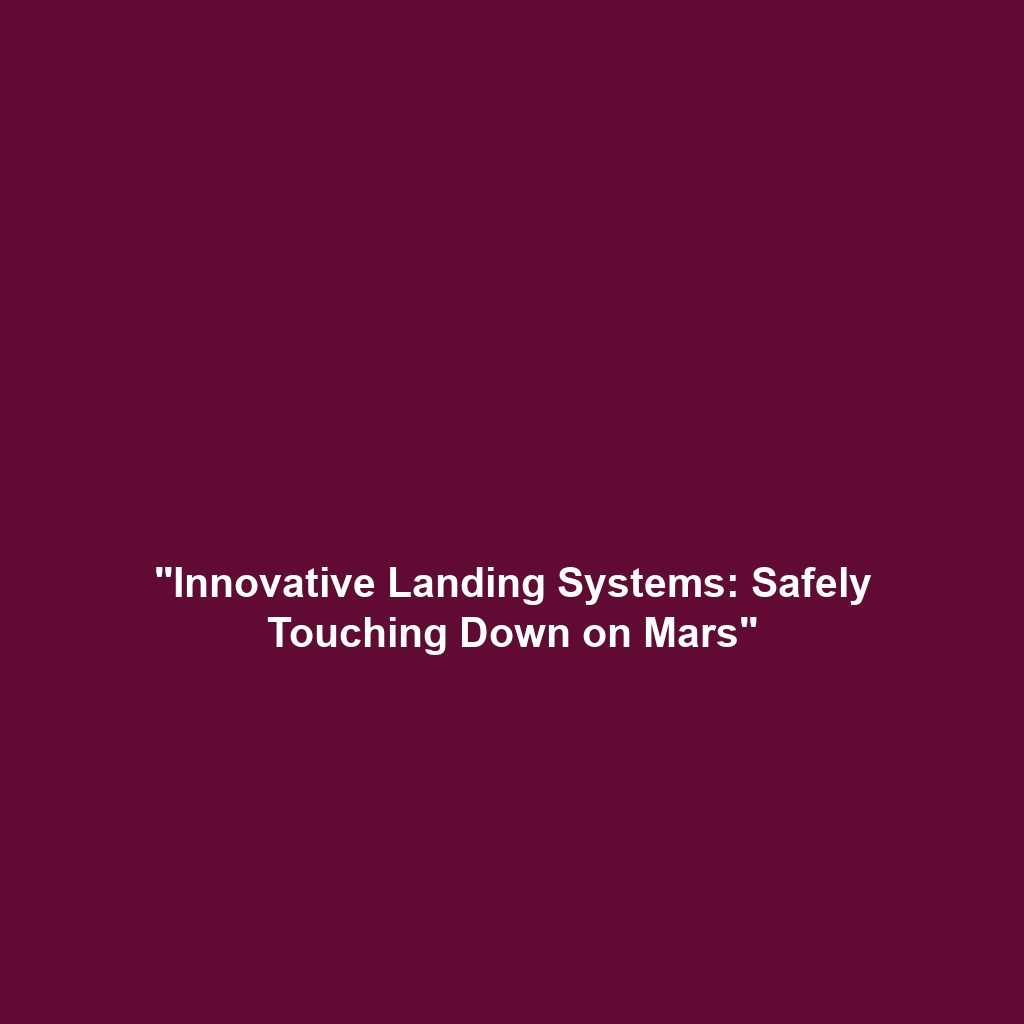Mars-Based Manufacturing: Utilizing Martian Resources for Local Manufacturing to Support the Colony
Introduction
Mars-Based Manufacturing is a vital component of the broader initiative of Colonizing Mars, aiming to establish sustainable human presence on the Red Planet. By harnessing Martian resources, this manufacturing process minimizes the need to transport materials from Earth, making colonization more feasible. Utilizing local materials not only enhances cost-effectiveness but also lays the foundation for self-sufficiency, a critical factor when building a lasting colony on Mars. Understanding the principles and potential of Mars-Based Manufacturing is essential for developing the infrastructure needed for a successful human settlement on Mars.
Key Concepts
In the context of Mars-Based Manufacturing, several key concepts come into play:
- In-Situ Resource Utilization (ISRU): This principle focuses on the extraction and utilization of local Martian materials, such as regolith, water, and carbon dioxide, to produce essential goods and services.
- 3D Printing: Advanced additive manufacturing techniques, including 3D printing, allow for the creation of structures, tools, and parts using Martian materials, significantly reducing logistical challenges.
- Closed-Loop Systems: By recycling resources and waste, closed-loop manufacturing systems can sustain production indefinitely, essential for long-term colonization efforts.
These concepts underscore the importance of Mars-Based Manufacturing within the larger framework of Colonizing Mars, highlighting the potential for advancing human habitation on the Red Planet.
Applications and Real-World Uses
Mars-Based Manufacturing has several transformative applications that are instrumental for Colonizing Mars:
- Construction: Utilizing Martian regolith for building habitats, reducing the reliance on Earth-supplied construction materials.
- Water Production: Extracting and purifying water from the Martian subsurface and atmosphere, essential for sustaining life.
- Oxygen Generation: Converting carbon dioxide into breathable oxygen using industrial processes founded on ISRU principles.
These applications demonstrate how effective Mars-Based Manufacturing is used in the overarching goal of Colonizing Mars, providing fundamental support to create a sustainable human environment.
Current Challenges
Despite the promise of Mars-Based Manufacturing, several challenges impede its development:
- Technological Limitations: Many manufacturing techniques need further refinement to function effectively in the harsh Martian environment.
- Resource Availability: Challenges in accurately assessing and extracting local resources pose significant barriers.
- Logistical Issues: Coordinating the transportation and deployment of manufacturing equipment to Mars remains complex.
Addressing these issues in Mars-Based Manufacturing is crucial for overcoming hurdles in Colonizing Mars.
Future Research and Innovations
Looking ahead, several innovative research areas hold promise for advancing Mars-Based Manufacturing:
- Advanced Robotics: Development of autonomous systems for mining and processing Martian resources can help reduce human risk.
- Biomimicry: Research into natural processes may inspire new manufacturing techniques that are efficient and sustainable.
- Nanotechnology: Small-scale manufacturing techniques can enhance material properties and create complex structures from local resources.
These breakthroughs could significantly impact the future of Colonizing Mars, enabling humans to thrive on the Red Planet.
Conclusion
Mars-Based Manufacturing is not only a cornerstone in the endeavor of Colonizing Mars but also a paradigm shift in how we think about resource utilization in space. As research and technology advance, the capacity to utilize Martian resources for local manufacturing will change the landscape of human settlement on the Red Planet. For those interested in further exploring this vital topic, consider reading about in-situ resource utilization techniques and the latest advancements in space manufacturing technology.






